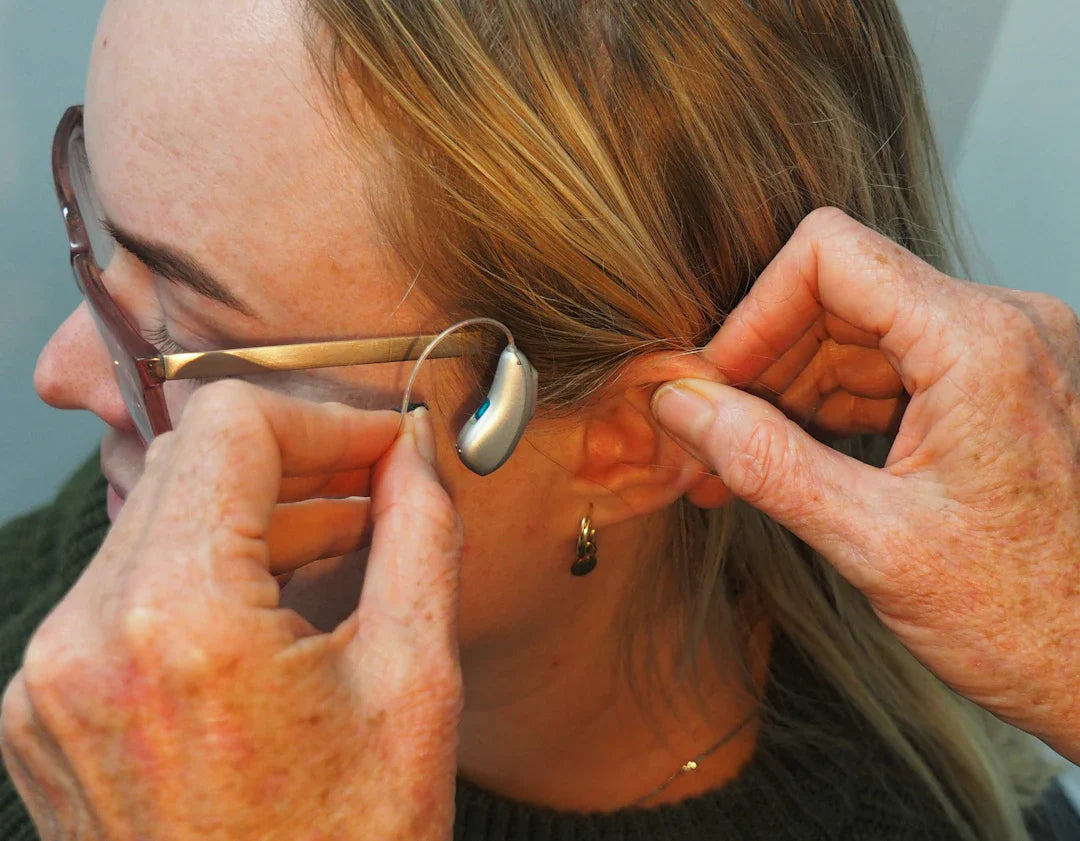Hearing impairment can create significant barriers to effective communication, affecting personal relationships, professional interactions, and everyday activities. At The Hearing Experts, we understand the importance of fostering understanding and connection, especially for those facing the challenges of hearing loss. This article aims to provide insights into how to communicate effectively with individuals who have hearing impairments, as well as tips for utilising modern technological advancements like the Phonak Lumity CROS.
Understanding Hearing Impairment
Hearing impairment, also commonly referred to as hearing loss, can vary from mild to profound. It may present itself in different forms, including:
- Conductive Hearing Loss: Often reversible, caused by blockages or damage in the outer or middle ear.
- Sensorineural Hearing Loss: Usually irreversible, stemming from damage to the inner ear or auditory nerve.
- Mixed Hearing Loss: A combination of both conductive and sensorineural hearing loss.
As we delve deeper into our discussion, it's crucial to recognise that not all individuals with hearing loss experience the same symptoms. Therefore, customising one's approach based on the individual's needs is vital.
The Importance of Clear Communication
Effective communication is foundational to any healthy relationship. When communicating with individuals who have hearing impairments, empathy and patience are essential. Here are several tips to enhance your communication approach:
1. Gain Attention
Before starting a conversation, ensure you have the person's attention. Gently wave your hand, make eye contact, or tap them lightly on the shoulder. This signals that you wish to communicate.
2. Speak Clearly and Naturally
When talking to someone with hearing loss, articulate your words clearly; however, do not shout. Speaking too loudly can distort your voice and make it harder for them to understand. Maintaining a natural tone is key to effective communication.
3. Reduce Background Noise
Background noise can be quite distracting, making it difficult for individuals with hearing impairments to focus on the conversation. Try to communicate in a quiet environment whenever possible.
4. Use Visual Aids
Utilise visual aids or gestures to reinforce your message. Body language, facial expressions, and written notes can also help convey your point effectively.
Utilising Technology in Communication
Embracing technology can bridge communication gaps significantly for individuals with hearing impairments. Technological solutions such as hearing aids, like the Phonak Lumity CROS, can enhance the listening experience and improve clarity during conversations.
The Phonak Lumity CROS: An Innovative Solution
The Phonak Lumity CROS system is designed specifically for individuals with hearing loss that affects one ear. This technology captures sounds using a transmitter in the non-hearing ear and transmits them to a hearing aid in the other ear. This innovative solution enables better speech understanding and listening enjoyment, allowing users to engage more comfortably in conversations.
Using such technologies can significantly enhance the daily communication experience of hearing-impaired individuals. Understanding how these devices work and how to support their use is essential for creating a conducive environment for effective interaction.
The Role of Audiology in Communication
Audiology is a field devoted to diagnosing and managing hearing loss and related disorders. Audiologists play an essential role in the communication journey for those with hearing impairments. They conduct comprehensive assessments, recommend appropriate hearing aids, and offer continual support throughout the treatment process.
Seeking Professional Help
If you or someone you know is experiencing hearing loss, seeking professional audiology services is paramount. Regular consultations and hearing assessments can ensure you benefit from the latest advancements in hearing care. Addressing issues like earwax build-up through professional earwax removal services can also enhance listening capabilities significantly.
Communicating in Different Situations
Communication dynamics may shift depending on the context. Here are some setting-specific pointers to consider when conversing with individuals who have hearing impairments:
1. At Home
Ensure your home is a comfortable environment for conversations. Minimising distractions and ensuring good lighting can create a more welcoming atmosphere.
2. In the Workplace
In professional settings, make reasonable adjustments to aid communication. This could involve allowing employees to utilise their hearing aids openly, providing written materials in advance, or using communication technology that supports their needs.
3. Social Gatherings
Consider the space where social gatherings take place. Opt for locations with minimal background noise to facilitate better conversations. Also, encourage others to be inclusive and aware of communication barriers.
Advocacy and Awareness
Raising awareness about hearing impairment is vital in fostering an inclusive environment for individuals with hearing loss. Here are some strategies for advocating for improved communication:
1. Educate Others
Share information about hearing loss and communication strategies among friends, family, and colleagues. Spreading awareness can cultivate understanding and support.
2. Promote Inclusive Practices
Encourage institutions, workplaces, and social gatherings to adopt inclusive communication practices that cater to individuals with hearing impairments. This could involve implementing accessible materials, providing interpreters, or ensuring sound systems are adequate.
Creating a Support Network
Establishing a support network for individuals with hearing loss can foster an environment of encouragement and understanding. Consider joining local support groups or online communities that cater to hearing-impaired individuals and their families.
Resources for Support
Here are some valuable resources available for those affected by hearing loss:
- NHS Audiology Services: Access to professional audiology assessments and hearing care.
- Action on Hearing Loss: A charity providing support and advice for people with hearing loss.
- Hearing Loss Association of America: Resources and networking opportunities for individuals with hearing impairments.
Taking Steps Towards Better Hearing Care
Understanding hearing impairment and how to communicate effectively fosters a meaningful connection with those affected. Regular hearing assessments, making use of hearing aids like the Phonak Lumity CROS, and addressing earwax issues through professional services are crucial steps toward optimal hearing care.
Ultimately, embracing modern solutions and advocating for inclusivity can empower individuals with hearing impairment, allowing them to participate in conversations with confidence and clarity. By fostering stronger communication, we can break down barriers and build connections that enhance relationships, create supportive networks, and promote understanding for everyone.
So let’s make a commitment today: to transform our communication styles, embrace technology, and show understanding to those living with hearing impairment. Together, we can build a world where everyone feels heard and understood.




